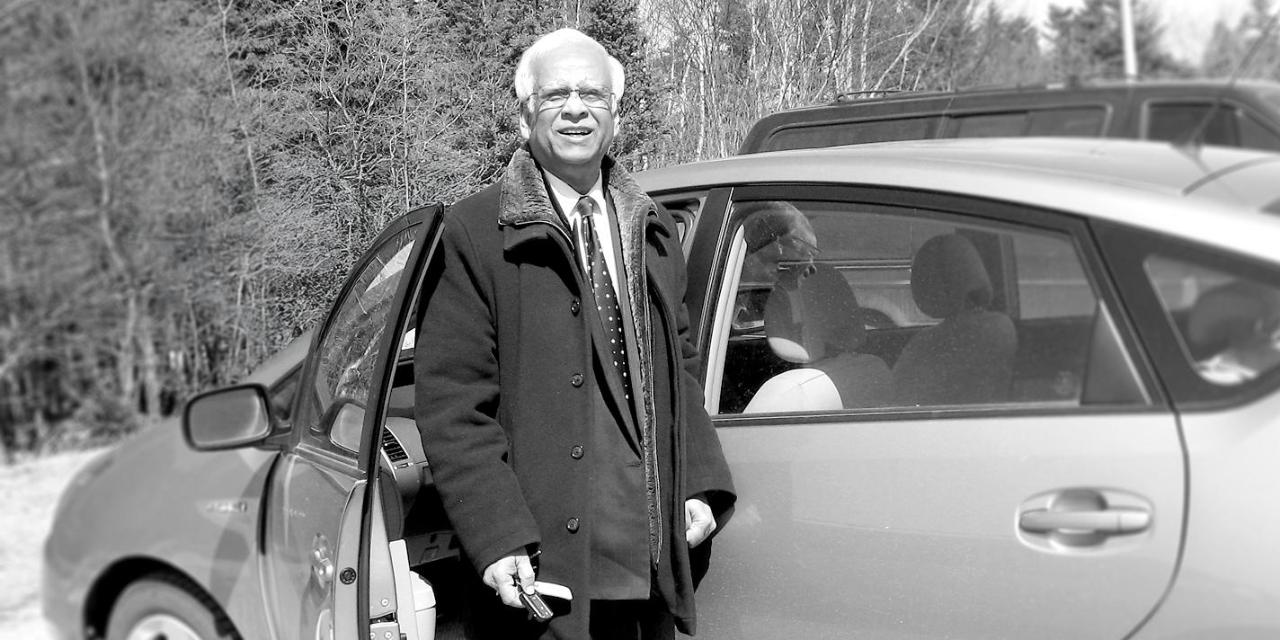Efficient revolutions
In the late 1990s, Toyota was in a race against time, and their competitors, to develop a car for the 21st century.
Engineers at the company wanted to create a vehicle that would be more environmentally friendly. But it wasn’t as easy as simply installing a battery and turning the ignition.
To increase battery life and extend the vehicle’s range, everything in the car had to be twice as efficient. This was impossible using conventional technology.
Revolutionary ideas were needed. And to solve one of their problems, the Toyota engineers turned to the work of Dr. Azizur Rahman at Memorial University.
Dr. Rahman was born in Santahar, Bangladesh, in 1941. He received his bachelor of science degree from the Bangladesh University of Engineering and Technology in Dhaka and emigrated to Canada as a Commonwealth Scholar to attend the University of Toronto.
He earned his master’s degree at Toronto in 1965 and completed his doctoral degree at Carleton in 1968.
In 1976, Dr. Rahman joined Memorial as a professor of electrical engineering.
Four years later, he would develop the prototype for an interior permanent magnet (IPM) motor and generator. The technology made the first mass-produced hybrid car, the Toyota Prius, possible. And today, IPM motors are at the heart of almost all hybrid and electric vehicles.
Not only is an IPM motor significantly more efficient than a traditional induction motor, but its generator can also use a vehicle’s momentum to charge the battery.
And the technology is not confined to the automotive industry. IPM motors can be used in anything from air conditioners to windmills, increasing efficiency, reducing emissions and improving sustainability.

Azizur Rahman developed the more efficient motors used in hybrid electric vehichles like his Toyota Prius. Photo from Memorial University Archives.
Dr. Rahman’s groundbreaking work would earn him the moniker “Mr. IPM.” When Carleton University awarded him its highest honour for alumni achievement, they referred to him as “the father of the hybrid.”
Over the years, he would become the first Canadian to win the highest achievement awards from the Institute of Electrical and Electronics Engineers (IEEE), the world’s largest professional organization for the advancement of technology.
The IEEE also honoured him with the Dr. Ing Eugene Mittelmann Award in 2007 for his “lifelong outstanding contributions to interior permanent magnet motor drive systems.”
The list of his other IEEE awards is nothing short of astonishing, but they recognize more than his technological advancements. He also won IEEE awards for his teaching and mentorship of graduate students.
He won the IEEE’s Outstanding Students Counselor Award in 1980 and IEEE Canada’s Outstanding Engineering Educator Medal in 1996.
In the spirit of fun-loving respect, his students would often organize “Rahman Tie Days.” Because Dr. Rahman was known for wearing the wider 1970s style of tie, his students would rummage through thrift stores in search of the widest ties they could find. They would then attend a lecture with the whole class wearing Rahman ties.
While his fashion sense may have been somewhat retro, Dr. Rahman’s work was cutting edge.
He made Memorial University the birthplace of the key technology that would eventually lead to the hybrid and electric vehicles we know today.
He was a professor and research professor here for 31 years and a consultant to companies like General Electric, the Iron Ore Company of Canada and Newfoundland and Labrador Hydro.
Though he never received any royalties from Toyota for his invention, he did receive a free Prius. But Dr. Rahman’s true reward, and the motivation for much of his research, was the knowledge that, in an energy hungry world, his innovations promised a more environmentally sound future for everyone.
